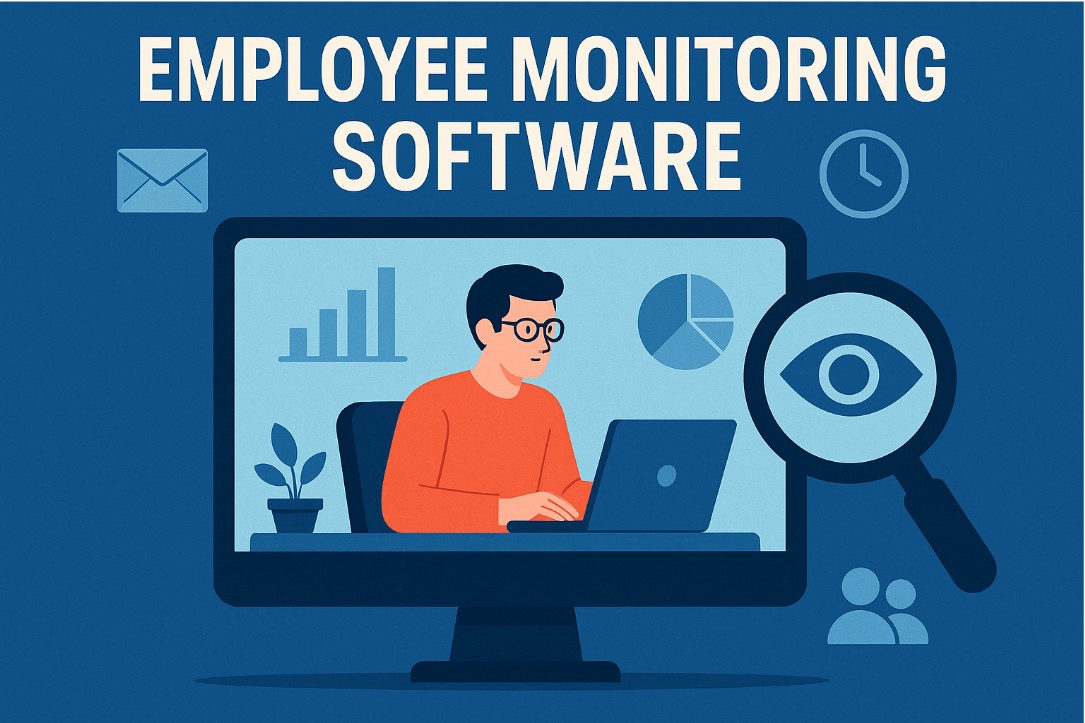Employee monitoring software has become a crucial tool for businesses, especially in the era of remote and hybrid work. This technology helps employers track productivity, enhance security, and optimize workflows while maintaining transparency and trust.
In this comprehensive guide, we’ll explore:
✅ What employee monitoring software is
✅ Key benefits and potential drawbacks
✅ Top-rated monitoring tools with detailed comparisons
✅ Best practices for ethical implementation
✅ FAQs to address common concerns
What Is Employee Monitoring Software?
Employee monitoring software refers to digital tools that track and analyze employee activities during work hours. These solutions provide insights into:
-
Time tracking (active vs. idle time)
-
Application & website usage (productive vs. unproductive apps)
-
Screen activity (screenshots, live screen monitoring)
-
Keystroke logging (limited due to privacy concerns)
-
Location & attendance tracking (GPS, geofencing)
The goal is not to micromanage but to improve efficiency, security, and workforce management 29.
Key Benefits of Employee Monitoring Software
1. Boosts Productivity & Accountability
-
Studies show a 7-22% increase in productivity when employees know their work is being monitored 5.
-
Identifies time-wasting activities (excessive social media, unproductive meetings).
-
Helps managers reward high performers and support struggling employees 3.
2. Enhances Data Security & Compliance
-
Detects insider threats (unauthorized data access, leaks).
-
Ensures compliance with GDPR, HIPAA, and industry regulations 311.
-
Monitors risky behavior (unauthorized app usage, phishing attempts).
3. Improves Remote & Hybrid Work Management
-
Tracks remote employee activity without physical supervision.
-
Helps balance workloads and prevent burnout 10.
-
Provides transparent proof of work for payroll and billing 4.
4. Optimizes Business Costs
-
Identifies underused software licenses (saving up to $800K annually) 12.
-
Reduces time theft (buddy punching, false work reports) 9.
Potential Drawbacks & Ethical Concerns
While beneficial, improper use of monitoring software can lead to:
-
Privacy violations (if tracking personal communications).
-
Employee distrust & low morale (if implemented without transparency).
-
Legal risks (some states require employee consent for monitoring) 9.
Best Practices to Avoid Issues:
✔ Be transparent – Inform employees about monitoring policies.
✔ Limit intrusive tracking – Avoid keylogging unless necessary.
✔ Focus on productivity, not surveillance – Use data for coaching, not punishment 210.
Top Employee Monitoring Software (2025 Comparison)
Here’s a detailed comparison of the best employee monitoring tools based on features, pricing, and use cases:
| Software | Best For | Key Features | Pricing (Starting) | Free Trial |
|---|---|---|---|---|
| Teramind | Security & Insider Threat Detection | Keystroke logging, live screen recording, AI-driven alerts | $14/user/month | 7-14 days |
| ActivTrak | Workforce Analytics | Productivity scoring, app usage tracking, Google Workspace integration | Free (up to 3 users) | 14 days |
| Hubstaff | Remote Teams | GPS tracking, automated payroll, time tracking | $4.99/user/month | 14 days |
| Veriato | Large Enterprises | AI-powered risk scoring, behavior analytics | $15/user/month | 7 days |
| Controlio | SMBs | Video snapshots, productivity scoring | Custom pricing | Demo available |
| Insightful | Employee Privacy | Stealth mode, productivity labeling | $8/user/month | 7 days |
| Time Doctor | Time Tracking & Billing | Screenshots, distraction alerts | $5.99/user/month | 14 days |
Final Thoughts
Employee monitoring software, when used ethically, can enhance productivity, security, and workforce management. The key is transparency, employee trust, and choosing the right tool for your business needs.
3 Most Asked FAQs About Employee Monitoring Software
1. Is Employee Monitoring Software Legal?
Yes, but laws vary by region. In the U.S., the Electronic Communications Privacy Act (ECPA) allows monitoring work devices, but some states (e.g., California) require employee consent. Always check local regulations before implementation 912.
2. How Can Employers Use Monitoring Without Hurting Morale?
-
Communicate openly about why monitoring is used.
-
Avoid micromanaging—focus on productivity trends, not individual keystrokes.
-
Use data for coaching, not punishment 210.
3. What’s the Best Employee Monitoring Software for Small Businesses?
For SMBs, Hubstaff (affordable time tracking) and ActivTrak (free plan available) are great choices. For security-focused businesses, Teramind offers robust features 14.
Know More: Insightfultopic
